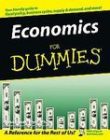While driving home last night, I had the miserable experience of listening to a financial journalist being interviewed about the anemic growth numbers that were just released.
I wasn’t unhappy because the interview was biased to the left. From what I could tell, both the host and the guest were straight shooters. Indeed, they spent some time speculating that the economy’s weak performance was bad news for Obama.
What irked me was the implicit Keynesian thinking in the interview. Both of them kept talking about how the economy would have been weaker in the absence of government spending, and they fretted that “austerity” in Washington could further slow the economy in the future.
This was especially frustrating for me since I’ve spent years trying to get people to understand that money doesn’t disappear if it’s not spent by government. I repeatedly explain that less government means more money left in the private sector, where it is more likely to create jobs and generate wealth.
In recent years, though, I’ve begun to realize that many people are accidentally sympathetic to the Keynesian government-spending-is-stimulus approach. They mistakenly think the theory makes sense because they look at GDP, which measures how national income is spent. They’d be much less prone to shoddy analysis if they instead focused on how national income is earned.
This should be at least somewhat intuitive, because we all understand that economic growth occurs when there is an increase in things that make up national income, such as wages, small business income, and corporate profits.
But as I listened to the interview, I began to wonder whether more people would understand if I used the example of a household.
Let’s illustrate by imagining a middle-class household with $50,000 of expenses and $50,000 of income. I’m just making up numbers, so I’m not pretending this is an “average” household, but that doesn’t matter for this analysis anyway.
Expenses Income
—————————————————————————————-
Mortgage $15,000 Wages $40,000
Utilities $10,000 Bank Interest $1,000
Food $5,000 Rental Income $8,000
Taxes $10,000 Dividends $1,000
Clothing $2,000
Health Care $3,000
Other $5,000
The analogy isn’t perfect, of course, but think of this household as being the economy. In this simplified example, the household’s expenses are akin to the way the government measures GDP. It shows how income is allocated. But instead of measuring how much national income goes to categories such as consumption, investment, and government spending, we’re showing how much household income goes to things like housing, food, and utilities.
The income side of the household, as you might expect, is like the government’s national income calculations. But instead of looking at broad measures of things such wages, small business income, and corporate profits, we’re narrowing our focus to one household’s income.
Now let’s modify this example to understand why Keynesian economics doesn’t make sense. Assume that expenses suddenly jumped for our household by $5,000.
Maybe the family has moved to a bigger house. Maybe they’ve decided to eat steak every night. But since I’m a cranky libertarian, let’s assume Obama has imposed a European-style 20 percent VAT and the tax burden has increased.
Faced with this higher expense, the household – especially in the long run – will have to reduce other spending. Let’s assume that the income side has stayed the same but that household expenses now look like this.
Expenses
—————————————————————-
Mortgage $15,000
Utilities $9,000 (down by $1,000)
Food $4,000 (down by $1,000)
Taxes $15,000 (up by $5,000)
Clothing $2,000
Health Care $3,000
Other $2,000 (down by $3,000)
Now let’s return to where we started and imagine how a financial journalist, applying the same approach used for GDP analysis, would cover a news report about this household’s budget.
This journalist would tell us that the household’s total spending stayed steady thanks to a big increase in tax payments, which compensated for falling demand for utilities, food, and other spending.
From a household perspective, we instinctively recoil from this kind of sloppy analysis. Indeed, we probably are thinking, “WTF, spending for other categories – things that actually make my life better – are down because the tax burden increased!!!”
But this is exactly how we should be reacting when financial journalists (and other dummies) tell us that government outlays are helping to prop up total spending in the economy.
The moral of the story is that government is capable of redistributing how national income is spent, but it isn’t a vehicle for increasing national income. Indeed, the academic evidence clearly shows the opposite to be true.
Let’s conclude by briefly explaining how journalists and others should be looking at economic numbers. And the household analogy, once again, will be quite helpful.
It’s presumably obvious that higher income is the best thing for our hypothetical family. A new job, a raise, better investments, an increase in rental income. Any or all of these developments would be welcome because they mean higher living standards and a better life. In other words, more household spending is a natural consequence of more income.
Similarly, the best thing for the economy is more national income. More wages, higher profits, increased small business income. Any or all of these developments would be welcome because we would have more money to spend as we see fit to enjoy a better life. This higher spending would then show up in the data as higher GDP, but the key things to understand is that the increase in GDP is a natural result of more national income.
Simply stated, national income is the horse and GDP is the cart. This video elaborates on this topic, and watching it may be more enjoyable that reading my analysis.

